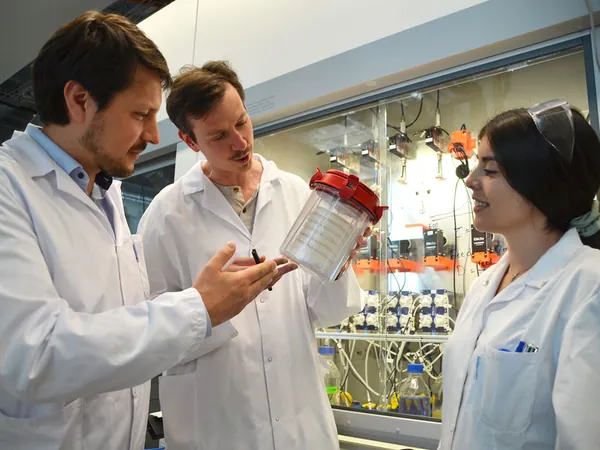
Shocking Study Reveals Air Pollution as a Hidden Trigger for Type 2 Diabetes Risk!
2025-01-14
Author: Sarah
Introduction
A groundbreaking study from Wayne State University has unveiled a troubling link between air pollution exposure and an increased risk of developing type 2 diabetes. Published in the renowned journal *Diabetes,* the research highlights a particularly concerning association with benzene, a common volatile organic compound found in the air we breathe.
Research Overview
Lead author Marianna Sadagurski, Ph.D., an associate professor at Wayne State University's Institute of Environmental Health Sciences, and her team conducted a comprehensive meta-analysis. This analysis brought together data from diverse populations, including both young adults and the elderly. The findings were alarming: a significant correlation was observed between the presence of benzene metabolites in urine and higher indices of insulin resistance.
Biological Mechanisms
Our research indicates that microglial NF-κB signaling plays a central role in metabolic dysfunction caused by common air pollutants,” stated Sadagurski. This research shines a light on the complex biological mechanisms that link environmental factors to metabolic diseases.
Animal Studies
To further investigate these findings, the research team exposed mice to benzene to observe its effects on blood glucose levels and energy expenditure. The results were striking — within just seven days of exposure, the mice exhibited dangerously high blood glucose and insulin levels.
Gender-Specific Responses
Notably, the study highlighted that disruptions in energy balance and changes to the hypothalamic transcriptome were observed in male mice only, indicating potential gender-specific responses to benzene exposure. This suggests that men may be particularly vulnerable to the insulin resistance induced by air pollutants.
Mechanisms of Insulin Resistance
The researchers determined that acute benzene exposure induces insulin resistance in the hypothalamus and activates an inflammatory response associated with the NF-κB pathway in microglial cells. Remarkably, by genetically eliminating this pathway in the microglia of benzene-exposed mice, the team was able to restore normal metabolic function.
Public Health Implications
The implications of this research are profound, prompting urgent calls for stronger regulatory measures to mitigate air pollution and protect public health. With diabetes rates skyrocketing globally, understanding the environmental factors that contribute to this crisis could be crucial in developing preventative strategies.
Collaboration and Future Directions
This significant study was collaboratively led by postdoctoral fellow Lukas Debarba and graduate students Hashan Jayarathne and Lucas Stilgenbauer, with contributions from a diverse team of researchers across several institutions. As the fight against diabetes continues, this research serves as a critical reminder that the air we breathe may hold the key to understanding and combating this growing epidemic.


 Brasil (PT)
Brasil (PT)
 Canada (EN)
Canada (EN)
 Chile (ES)
Chile (ES)
 Česko (CS)
Česko (CS)
 대한민국 (KO)
대한민국 (KO)
 España (ES)
España (ES)
 France (FR)
France (FR)
 Hong Kong (EN)
Hong Kong (EN)
 Italia (IT)
Italia (IT)
 日本 (JA)
日本 (JA)
 Magyarország (HU)
Magyarország (HU)
 Norge (NO)
Norge (NO)
 Polska (PL)
Polska (PL)
 Schweiz (DE)
Schweiz (DE)
 Singapore (EN)
Singapore (EN)
 Sverige (SV)
Sverige (SV)
 Suomi (FI)
Suomi (FI)
 Türkiye (TR)
Türkiye (TR)
 الإمارات العربية المتحدة (AR)
الإمارات العربية المتحدة (AR)